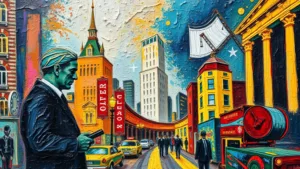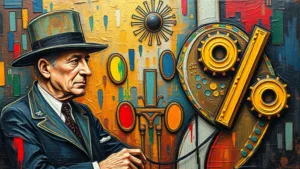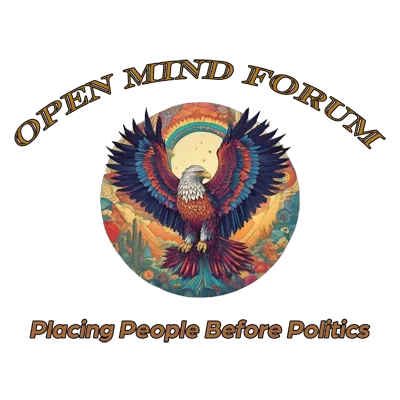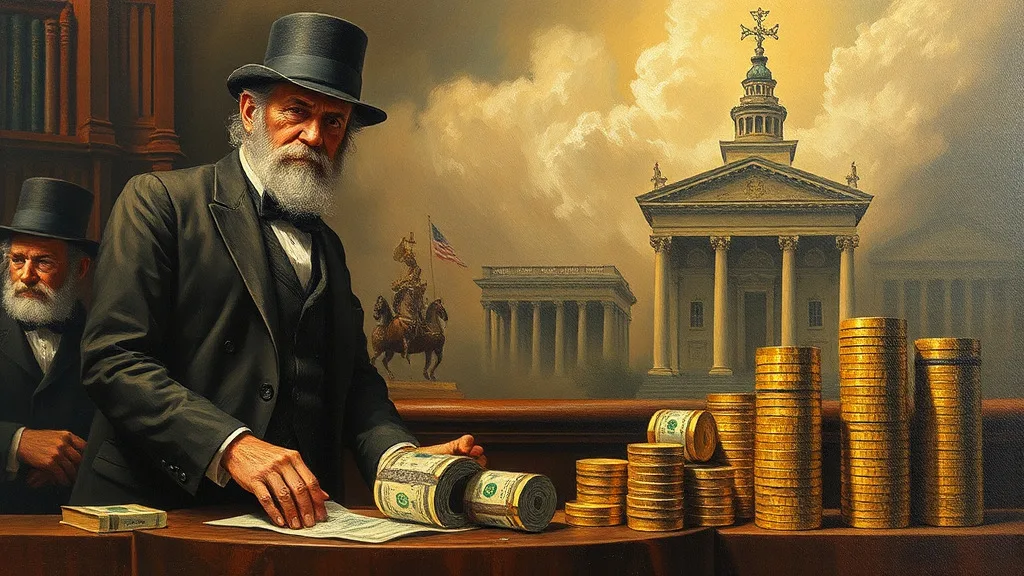A Comparative History of Greed Across much of the Last Millennium
Introduction to Robber Barons and The One Percent
Robber barons and the one percent are near mirror images of greed and exploitation in the Unites States and the world in general. To think of the world as a place of limited assets, the wealthy have always exploited the majority of less fortunate people. Both Robber barons and the one percent have a firm precedent to build their fortunes and exploit the weaker common folk to do their bidding.
Inequality has woven itself into human history, with devastating consequences for the majority while enriching a powerful few. The turn of the first millennia CE, the 1190s, the feudal system was built on military strength and the deliberate exploitation of the people. This system serves as a roadmap to greed and self-interest rather than focusing on the will of the people.
The turn of the 20th Century CE the era of the Robber Barons, and today’s age of the One Percent reveal striking parallels in their mechanisms of exploitation, concentration of wealth, and societal fallout. The specifics of each era differ, but their lessons are clear: unchecked greed devastates societies, widens inequality, and stifles progress. Let us briefly explore the connections to historical models and the adaptation of the rich exploiting the poor as it plays out in three brief scenarios.
Feudal Lords and the Inequalities of the 1190s
The 1190s saw the peak of feudalism, a system designed to entrench the wealth and power of the ruling elite. Lords hoarded land, the most valuable resource of the time, and demanded unrelenting taxes from peasants. For instance, King Richard I of England imposed the infamous Saladin Tithe to fund his Crusades. This levy drained resources from already struggling peasants, forcing many to sell what little they owned or abandon their land entirely.
The consequences rippled through society. Starvation and disease surged as communities collapsed under the financial burden. Entire villages disappeared, their inhabitants reduced to begging or fleeing to overcrowded cities. The Crusades themselves served as a pretext for further looting and exploitation, enriching the nobility while the poor sacrificed their lives.
In today’s terms, this mirrors how modern billionaires leverage global crises—like the 2008 financial crash or the COVID-19 pandemic—to grow their wealth while ordinary workers lose homes, jobs, and healthcare. The mechanisms have changed, but the outcomes remain tragically familiar.
The Gilded Age: Exploitation Industrialized by Robber Barons and the One Percent
The Robber Baron Age (roughly 1870–1900) marked a dramatic escalation in inequality, as industrialists amassed unprecedented wealth. Figures like Andrew Carnegie, John D. Rockefeller, and J.P. Morgan monopolized industries ranging from steel to oil to railroads. They crushed competitors, suppressed wages, and manipulated governments to protect their interests.
One glaring example comes from the Homestead Strike of 1892, when Carnegie Steel workers protested brutal conditions and wage cuts. The company, under Carnegie and manager Henry Clay Frick, hired Pinkerton agents to break the strike, resulting in a bloody clash that left several workers dead. The strike’s failure cemented the power of industrialists over labor.
Robber Barons also exploited systemic racism and discrimination to maintain their dominance. African American workers, often excluded from unions, faced lower wages and harsher conditions. Immigrant laborers, especially from Ireland, China, and Southern Europe, were similarly exploited, performing dangerous jobs for minimal pay. The consequences for these communities included generational poverty and limited upward mobility.
While some Robber Barons funded public projects like libraries or universities, their philanthropy masked the damage their business practices inflicted. Rockefeller’s wealth, for example, came at the expense of ruined competitors and exploited workers. Modern billionaires, such as Elon Musk and Jeff Bezos, continue this tradition, presenting themselves as innovators while mistreating workers and dodging taxes.
Robber Barons and the One Percent Today
Today’s One Percent surpasses even the Robber Barons in their accumulation of wealth and influence. In 2020, the richest 1% owned more wealth than the entire middle class in the United States. The mechanisms enabling this disparity are global: tax havens, corporate lobbying, and the financialization of nearly every sector of the economy. These mechanisms isolate the wealthy, the millionaires and billionaires, from the rest of us. In their minds, it is an example of how God blesses the rich without regard for the conditions of those they exploit; yes, the rest of us.
One Example from so many Available Examples of Modern Domestic Exploitation
Consider the role of Amazon, whose founder Jeff Bezos became the world’s richest man while paying workers low wages and avoiding taxes. In 2021, Amazon paid just 6% of its profits in federal income tax despite earning $33 billion. Meanwhile, workers in its warehouses faced grueling conditions, including insufficient breaks and high injury rates. Some even urinated in bottles to meet unrealistic productivity goals.
The Consequences of Deregulation Supported By the Robber Barons and the One Percent
This exploitation of human beings began in full with deregulation of businesses was, since the end of the second world war, regulated by labor laws and the strength of union labor. Ronald Reagan’s presidency set the table for deregulation and anti-union legislation, tax cuts for the rich, ensuring they do not pay their fair share in the nation’s budget spending, and the lack of concern for local manufacturing through globalization thus the ability to move manufacturing to places outside the United States to places where worker exploitation continues to this day.
Remember that your iPhone is assembled by workers in China making less than the equivalent of $0.50 per hour over a 12 to 14 hour day. That translates to $6.00 to $7.00 per day. Quite a shift when Union wages for manufacturing companies in the United States might be as high as $25 per hour. Now the Union labor force is forced out of work as domestic factories bolt their doors closed, workers who, if they can find a job, make about a third of their factory income.
The consequences extend beyond individual suffering. Widespread inequality weakens democracy itself. Studies show that concentrated wealth correlates with political corruption, as elites fund campaigns and lobby for laws that protect their interests. This dynamic undermines public trust and stymies efforts to address pressing issues like climate change, healthcare reform, and education equity.

Consequences of Unchecked Greed : Robber Barons and The One Percent
The human cost of these inequalities cannot be overstated. In the 1190s, peasants faced famine and disease; during the Gilded Age, industrial workers endured horrific conditions and violent suppression. Today, inequality drives homelessness, mental health crises, and even reduced life expectancy for low-income populations. Not to mention famine and preventable disease as a chronic problem for low-income Americans is the new normal. A 2019 study found that the richest Americans live 10–15 years longer than the poorest, a gap that reflects systemic neglect of healthcare and social support.
Inequality also stifles innovation and economic growth. When wealth concentrates at the top, consumer spending declines, slowing the economy. In the Gilded Age, this dynamic contributed to the Panic of 1893, one of the worst economic depressions in U.S. history. Today, similar trends exacerbate economic instability, with low wages and precarious work leaving millions vulnerable to financial shocks. Nothing changes, it merely looks as if those changes are something resembling normal. And perhaps it is.
Ayn Rand, The Virtue of Selfishness, and the Philosophy of Greed
Much like Carnegie’s The Gospel of Wealth, Ayn Rand’s The Virtue of Selfishness plays a significant role in shaping the philosophical underpinnings of the modern real-politic of greed and class division. While Carnegie’s work tried to justify the massive accumulation of wealth through philanthropy, Rand’s ideology openly champions self-interest as a moral good. She presents selfishness not just as a personal trait, but as the highest moral standard. This philosophy has influenced an entire generation of thinkers, politicians, and billionaires, giving a philosophical rationale to the vast economic inequalities of the modern world. The Randian monster, the neo-liberal for whom globalization and free trade is their motto, are without an ethic that requires one to care for the other as they wish to be cared for themselves.
Randian Influence on Greed in Support of Robber Barons and The One Percent
Rand argues that the pursuit of one’s own happiness, unimpeded by societal expectations of altruism or collective responsibility, is the ultimate moral pursuit. In The Virtue of Selfishness, she asserts that “the essence of selfishness is the virtue of rational self-interest,” positioning the individual’s right to pursue wealth and power above any moral obligation to others. According to Rand, this model leads to a healthier society because it encourages individuals to act according to their own rational judgment, unburdened by the supposed “sacrifices” demanded by others.
Randian Impact on the Political and Cultural Landscape
This view has had a lasting impact on the political landscape, especially in the United States. For instance, politicians and business leaders who espouse Rand’s philosophy often support policies that favor deregulation, tax cuts for the wealthy, and the dismantling of social safety nets. The argument is simple: if individuals are allowed to operate according to their

own self-interest, society will inevitably benefit. The reality, however, is far more complicated.
Rand’s ideas resonate with the modern-day Robber Barons and the One Percent, who exploit the philosophy of self-interest to justify their wealth and power. Take, for example, the policies pushed by figures like Charles Koch or the libertarian think tanks that support tax cuts for the wealthy while advocating for cuts to public services. These policies reflect the Randian ideal of minimal government interference, which disproportionately benefits the rich while harming the broader population. The self-interest of the elite is defended as virtuous, even as it exacerbates inequality, erodes democratic processes, and weakens public institutions.
Navigating the Gaps: Randian Greed and the Dissolution of The American Dream
Moreover, Rand’s influence isn’t just limited to the boardrooms and halls of government. Her ideas have permeated popular culture, especially through her influence on the political right and Silicon Valley’s libertarian-leaning tech moguls. Figures like Elon Musk and Peter Thiel, who have publicly praised Rand, view her as a model for their worldview, where individual achievement and profit are prioritized above all else. This worldview helps maintain the economic structures that allow the One Percent to flourish at the expense of everyone else.
The consequences of embracing Rand’s philosophy are stark. As the gap between the wealthy and the rest of society widens, the ideals of cooperation, social responsibility, and community are increasingly seen as secondary. This feeds into a larger cultural narrative that justifies economic disparities as the natural result of individual merit, rather than structural inequality. While Rand’s ideas were framed as a rejection of collectivism, they are, in practice, a convenient tool for perpetuating a system that favors the elite, leaving the majority without the means to challenge the status quo.
However, history has shown that unchecked greed and the consolidation of power by the elite are not sustainable. The consequences of such systems have led to social upheavals, revolutions, and the eventual dismantling of these power structures. As we move forward, the solution lies in recognizing the damage caused by ideologies like Rand’s and advocating for a more equitable system—one that values collective responsibility, shared prosperity, and social justice.
A Roadmap for Change–Ending the Era of Robber Barons and The One Percent
History shows that collective action can curb the excesses of greed. The labor movements of the Gilded Age led to reforms like the eight-hour workday and child labor laws. The New Deal of the 1930s built on these efforts, introducing policies like Social Security and progressive taxation that reduced inequality for decades.
Advocating New Regulatory Legislation
However, the dismantling of these protections since the 1980s has fueled today’s crisis. To reverse this trend, we need bold policies: stronger labor protections, universal healthcare, wealth taxes, and campaign finance reform. Public pressure must force governments to prioritize the majority over the elite few. Yet, none of that may be possible given the results of the 2024 election that will install a quasi-one-percenter to the office of President of the United States. If his first term is a predictor of his second term in office, the diminishing middle-class and the very poor will be further downtrodden as the One Percenters find new ways to exploit and dominate the conversation.
Popular Movements for Real Change
Movements like Occupy Wall Street and the Fight for $15 demonstrate the power of grassroots organizing. While these efforts face resistance, their successes show that change is possible. Learning from the past can guide our fight for a fairer future albeit if the historical cycle continues, and I see no reason it will not, then our children will inherit a dystopian world that guarantees the current economic divisions and almost ensures the wealth disparity only it will morph into something more deliberate and exploitive. In short, without a groundswell of public support, we are doomed to live in a world in in which greed is worshiped as a god while focusing on more for me and less for you.
Careful what you vote for, if we ever have another free and fair election!
Sources Cited
Carnegie, A. (1901). The Gospel of Wealth. New York: Century.
Chernow, R. (1998). Titan: The Life of John D. Rockefeller, Sr. New York: Random House.
Piketty, T. (2014). Capital in the Twenty-First Century. Cambridge: Harvard University Press.
Saez, E., & Zucman, G. (2019). The Triumph of Injustice: How the Rich Dodge Taxes and How to Make Them Pay. New York: Norton.
Tuchman, B. (1978). A Distant Mirror: The Calamitous 14th Century. New York: Knopf.
Suggestions for Further Reading
Graeber, D. (2011). Debt: The First 5,000 Years. A deep dive into the evolution of economic systems and their role in perpetuating inequality.
McCullough, D. (1987). The Path Between the Seas. Chronicles industrial excesses during the construction of the Panama Canal.
Phillips, K. (2002). Wealth and Democracy. Explores recurring patterns of wealth concentration and their impact on democracy.
Reich, R. (2015). Saving Capitalism. Examines the need for reforms to address today’s inequality.
Stiglitz, J. (2012). The Price of Inequality. Critiques the policies that favor the wealthy at everyone else’s expense.
Zinn, H. (1980). A People’s History of the United States. Offers a grassroots perspective on the fight against inequality.
Walker, R. (2018). Pictures of a Gone City. Explores modern inequality in the heart of Silicon Valley.
Wilkerson, I. (2020). Caste: The Origins of Our Discontents. Links past and present systems of oppression.
Westover, T. (2018). Educated: A Memoir. Highlights the challenges of escaping generational poverty through education.
Disclaimer: The images and videos in this post are AI-generated creations, intended purely for illustrative and conceptual purposes. They are not real-life representations and should not be interpreted as such. Their sole purpose is to offer a visual means of exploring the topics discussed in this post.





